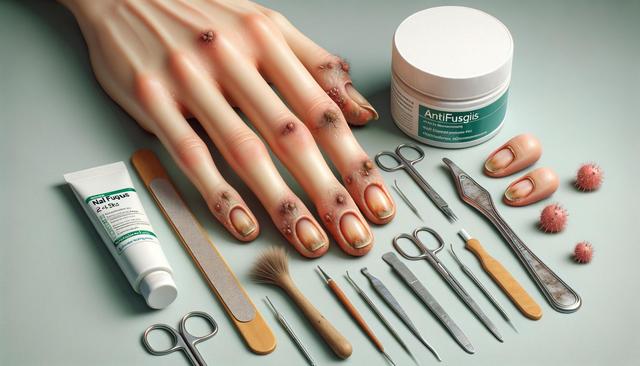What Is Nail Fungus and How Does It Develop?
Nail fungus, medically known as onychomycosis, is a common condition that affects the toenails or fingernails. It typically begins as a white or yellow spot under the tip of the nail and can spread deeper into the nail if left untreated. The infection is caused by various types of fungi, including dermatophytes, yeasts, and molds. Nail fungus thrives in warm, moist environments, making locker rooms, public showers, and swimming pools common sources of exposure. Individuals with compromised immune systems, diabetes, or poor circulation are at higher risk of developing this condition.
As the infection progresses, the nail may become discolored, thickened, brittle, or distorted in shape. In some cases, the nail may even separate from the nail bed. While nail fungus is not usually painful in its early stages, it can cause discomfort and complications if ignored. Recognizing the early signs and understanding how it develops are essential for managing and preventing further spread.
Traditional Treatment Options for Nail Fungus
There are several treatment options available for nail fungus, ranging from topical solutions to oral medications. Each method has its own pros and cons depending on the severity of the infection and the individual’s health condition.
Common traditional treatments include:
- Topical antifungal creams and lacquers: These are applied directly to the affected nail and surrounding skin. They are generally used for mild to moderate infections.
- Oral antifungal medications: Prescribed for more advanced or persistent infections, these medications work through the bloodstream to target the fungus. They may require liver function monitoring due to potential side effects.
- Home remedies: Some individuals try natural options like tea tree oil, vinegar soaks, or Vicks vapor rub. While popular, these are not always supported by clinical evidence.
Though effective for some, traditional treatments can take several months to show results. Consistency in use and good foot hygiene are critical to achieving successful outcomes.
Laser Treatment for Nail Fungus: How It Works
Laser therapy has become an increasingly recognized option for treating nail fungus. It involves using targeted laser light to penetrate the nail and destroy the fungus without damaging the surrounding tissue. One of the main appeals of laser treatment is its non-invasive nature and minimal side effects.
The procedure is typically performed in a clinic and may require multiple sessions depending on the severity of the infection. Each session usually lasts about 30 minutes, and patients can return to their normal activities immediately afterward. The laser light heats and kills the fungus while promoting healthy nail growth over time.
Benefits of laser treatment include:
- Minimal discomfort: Most patients report only a warm sensation during the procedure.
- No need for daily medication: Unlike oral antifungals, laser treatment doesn’t require ongoing drug use.
- Low risk of side effects: There is no risk of liver damage, which can be a concern with oral treatments.
While not always covered by insurance, understanding the best laser nail fungus treatment cost can help patients weigh the investment against long-term benefits.
Factors That Influence Laser Treatment Cost
When considering laser treatment for nail fungus, it’s important to understand the factors that influence the cost. The price can vary widely depending on a range of elements, including the clinic’s location, the technology used, and the number of sessions required.
Key factors affecting the cost include:
- Severity of infection: More advanced cases often require multiple sessions, increasing the overall cost.
- Number of nails treated: Treating more than one nail adds to the procedure time and expense.
- Clinic fees: Prices can vary between dermatology or podiatry clinics, and some may offer package deals.
- Technology used: More advanced laser devices may provide better outcomes but at a higher cost.
On average, the cost per session ranges from moderate to high depending on the market. Some clinics offer consultations to assess the condition and provide a personalized treatment plan. Although it might seem costly upfront, many patients find it worthwhile given the potential for long-term results and reduced recurrence.
Choosing the Right Treatment for You
Selecting the most suitable treatment option depends on several personal and medical factors. It’s important to consult with a healthcare provider for a proper diagnosis and to discuss the advantages and limitations of each option. Laser therapy may be especially appealing for individuals who cannot tolerate oral medications or who have not seen improvement with topical treatments.
You should also consider:
- Your medical history: Conditions like liver disease may make oral antifungals unsuitable.
- Severity and duration of the infection: More advanced infections may respond better to combined approaches.
- Budget: Weighing the best laser nail fungus treatment cost against other options can help you make an informed decision.
- Lifestyle: Choosing a treatment that fits your schedule and routine can improve adherence and results.
Ultimately, the goal is to eliminate the fungus and restore healthy nail growth. Whichever treatment path you choose, consistency and follow-up care are essential. Keeping nails clean, dry, and trimmed can prevent reinfection and support recovery.
Conclusion: Taking Control of Nail Fungus
Nail fungus can be stubborn, but with the right information and treatment approach, it’s possible to manage and overcome this condition. Whether you’re exploring traditional antifungal medications or considering laser therapy, understanding your options helps you make confident and informed decisions. Evaluating the best laser nail fungus treatment cost is part of that process—balancing effectiveness, safety, and affordability. By taking proactive steps and maintaining good foot hygiene, you can support the healing process and reduce the chances of recurrence. If you’re unsure which treatment is right for you, a healthcare provider can guide you toward the most appropriate solution based on your individual needs.


